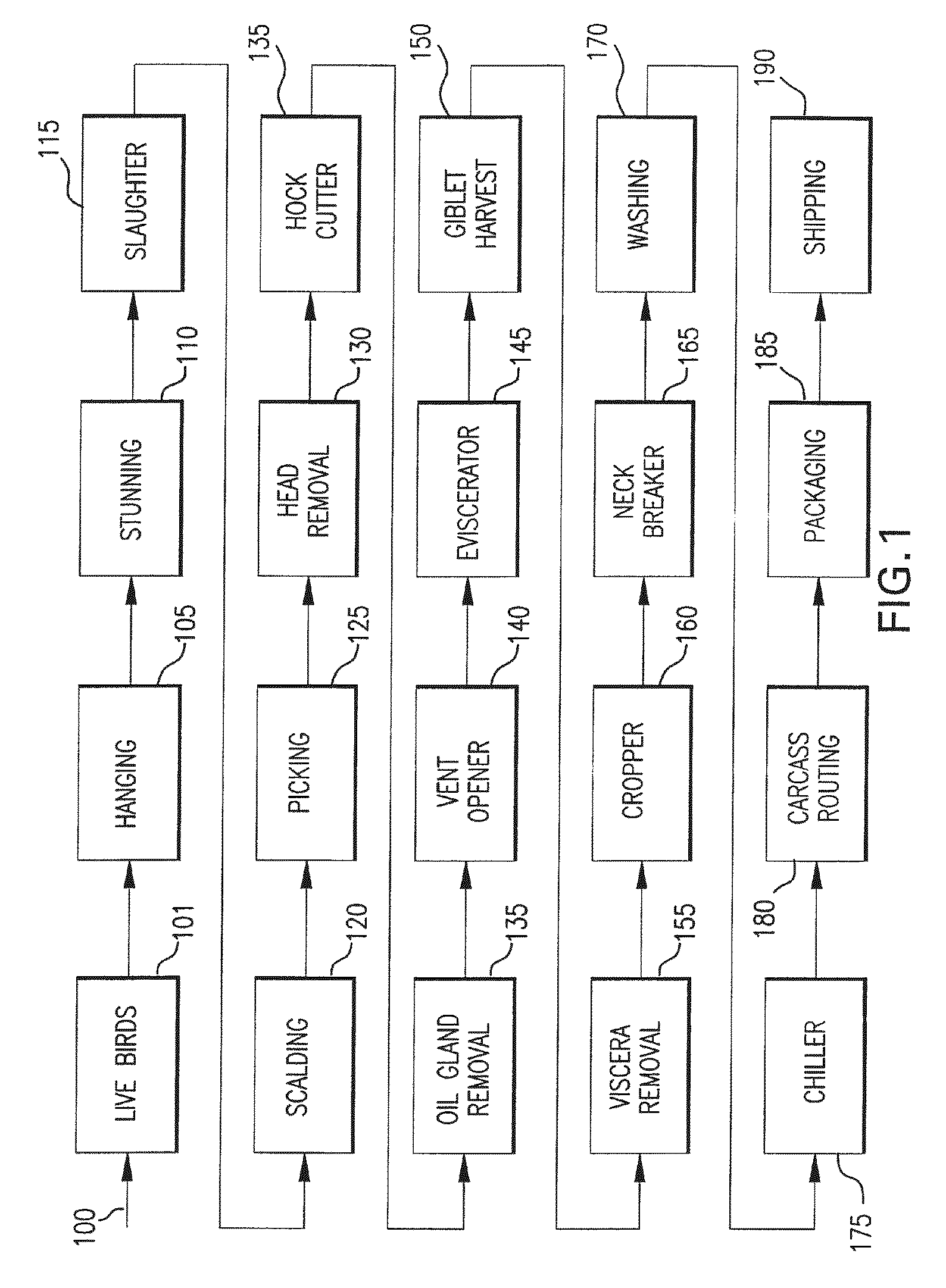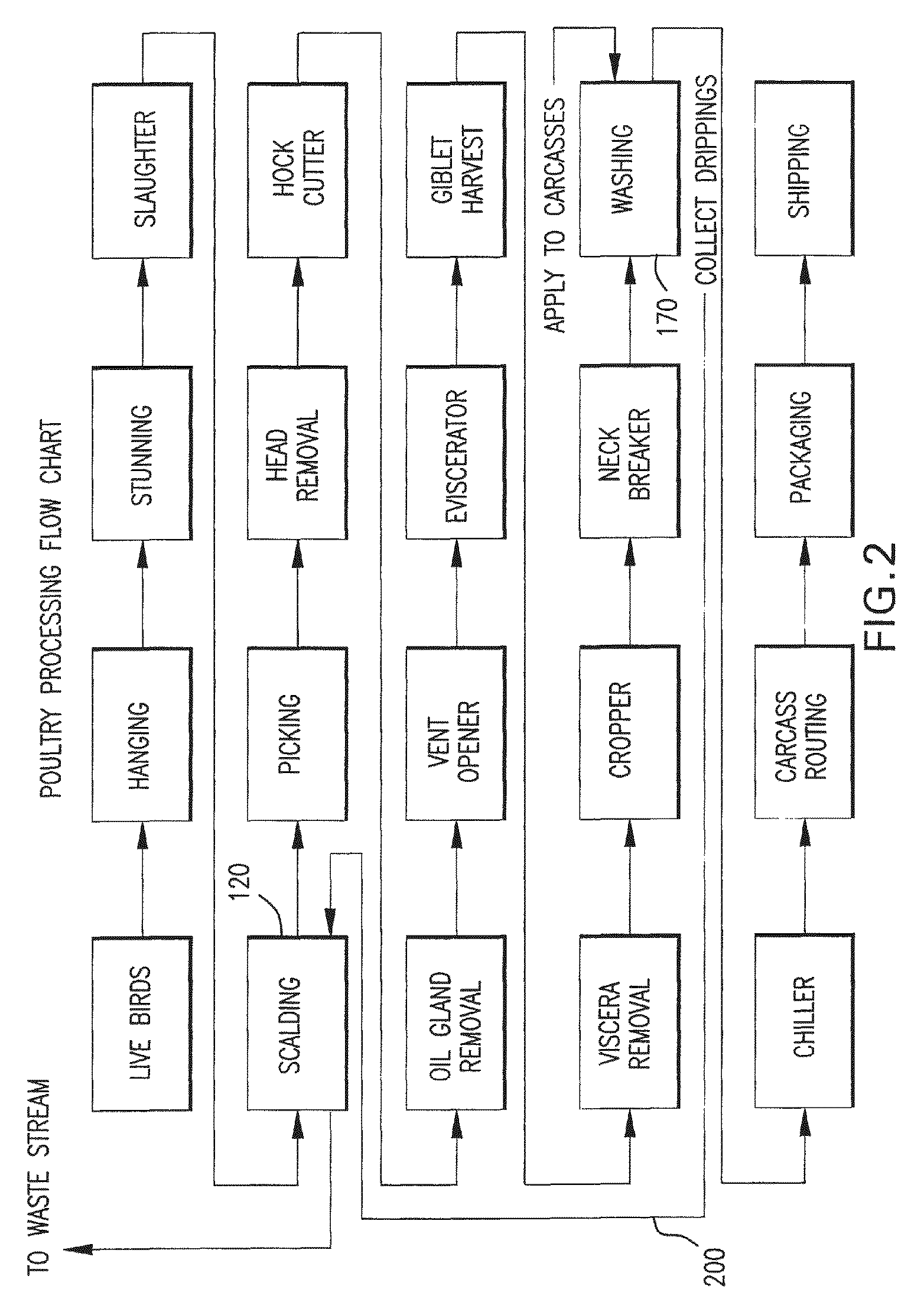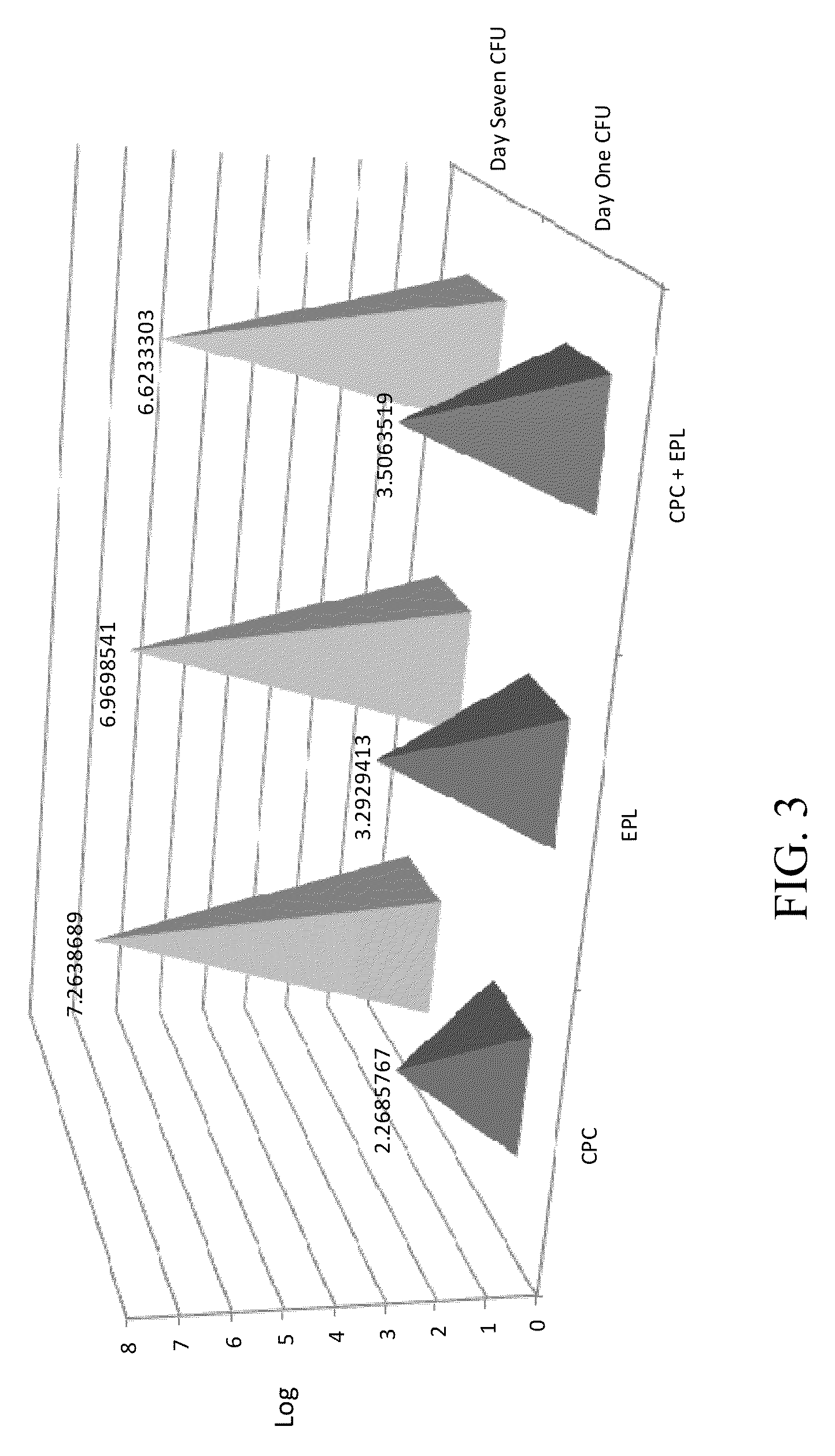Antimicrobial compositions and methods of use thereof
a technology of compositions and antimicrobials, applied in the field of antimicrobial compositions, can solve the problems of inability to remove microorganisms with rinsing alone, inconsistent efficacy of many conventional treatments, and inability to effectively treat one type of microorganism, so as to reduce the number of microorganisms, and prevent the growth of microorganisms. or survival
- Summary
- Abstract
- Description
- Claims
- Application Information
AI Technical Summary
Benefits of technology
Problems solved by technology
Method used
Image
Examples
specific examples
[0117]In one aspect, the aliphatic benzyl dialkyl ammonium salt can have any of the aliphatic moieties disclosed above bonded to any benzylalkyl amine moieties disclosed above. In some specific examples, R1 in the formula of aliphatic benzyl dialkyl ammonium salts can be an aliphatic group of from 10 to 40 carbon atoms, e.g., a decyl, dodecyl (lauryl), tetradecyl (myristyl), hexadecyl (palmityl or cetyl), octadecyl (stearyl), or eicosyl (arachidyl) group, and R and R can each be, independent of one another, a methyl, ethyl, propyl, butyl, pentyl, or hexyl group.
[0118]In another aspect, the aliphatic benzyl dialkyl ammonium salts can include, but are not limited to, alkyl dimethyl benzyl ammonium halides (e.g., alkyl dimethyl benzyl ammonium chloride, alkyl dimethyl benzyl ammonium bromide, or mixtures thereof). Specific examples of alkyl dimethyl benzyl ammonium halides include, but are not limited to, cetyl dimethyl benzyl ammonium halide (e.g., cetyl dimethyl benzyl ammonium chlor...
examples
[0184]The following examples are set forth below to illustrate the methods and results according to the disclosed subject matter. These examples are not intended to be inclusive of all aspects of the subject matter disclosed herein, but rather to illustrate representative methods and results. These examples are not intended to exclude equivalents and variations of the present invention which are apparent to one skilled in the art.
[0185]Efforts have been made to ensure accuracy with respect to numbers (e.g., amounts, temperature, etc.) but some errors and deviations should be accounted for. Unless indicated otherwise, parts are parts by weight, temperature is in ° C. or is at ambient temperature, and pressure is at or near atmospheric. There are numerous variations and combinations of reaction conditions, e.g., component concentrations, desired solvents, solvent mixtures, temperatures, pressures and other reaction ranges and conditions that can be used to optimize the product purity ...
examples 1-3
Protocol for Comparison of ε-Poly-L-Lysine and Quaternary Ammonium Compound Antimicrobial Properties Alone and in Combination
[0186]The following solutions were prepared. A cetylpyridinium chloride (CPC) solution was prepared by combining 1.0 g of cetylpyridinium chloride (CAS No. 123-03-05) in 100 mL of water to form a nominal 1.0 wt % CPC test solution. An epsilon-polylysine (EPL) solution was prepared by combining 4.3 g epsilon-polylysine (CAS No. 25104-18-1) in water to form 100 mL of aqueous solution to form a nominal 4.3 wt % EPL test solution. The combination test solution was prepared by combining 1.0 g of cetylpyridinium chloride and 4.3 g epsilon-polylysine in water to form 100 mL of aqueous solution to form a standard concentration combination solution, and 3.7 g of this standard concentration solution was diluted up to 100 mL to form a combination test solution, which is diluted roughly 27-fold from the from the standard concentration solution.
[0187]The following test met...
PUM
| Property | Measurement | Unit |
|---|---|---|
| pH | aaaaa | aaaaa |
| dwell time | aaaaa | aaaaa |
| dwell time | aaaaa | aaaaa |
Abstract
Description
Claims
Application Information
 Login to View More
Login to View More - R&D
- Intellectual Property
- Life Sciences
- Materials
- Tech Scout
- Unparalleled Data Quality
- Higher Quality Content
- 60% Fewer Hallucinations
Browse by: Latest US Patents, China's latest patents, Technical Efficacy Thesaurus, Application Domain, Technology Topic, Popular Technical Reports.
© 2025 PatSnap. All rights reserved.Legal|Privacy policy|Modern Slavery Act Transparency Statement|Sitemap|About US| Contact US: help@patsnap.com



